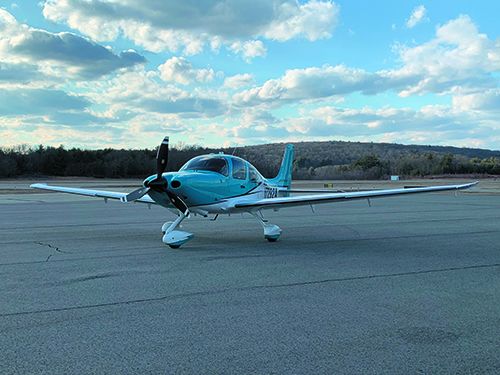We’ve been incrementally covering the Cirrus SR-series piston in Aviation Consumer since the beginning of Cirrus time, and strapping into the 2020 flagship SR22T Cirrus’ Cliff Allen reminded me that it has been 23 years.
Today this million-dollar piston single continues to outsell any GA airplane by a wide margin, while brand loyalty and satisfaction soars.
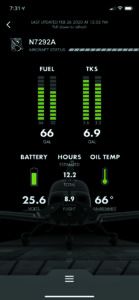
But a hardened insurance market is putting more demands on Cirrus pilots, especially ones getting on in age and those with limited flying experience. NTSB wreck reports prove that some pilots in an SR22 might indeed be an insurance risk. But what if Cirrus helped tame that dragon by keeping an eye on this crowd through real-time data collection, sourced automatically every time the aircraft lands, and use it to build a customized remedial training curriculum? Meanwhile, software can keep an eye on engine and airframe vitals ahead of failures.
Much of that intelligence was already built in to the Cirrus for years. The Garmin G1000 Perspective+ isn’t the only avionics suite capable of recording mega data.
All it took was a cellular transceiver to advance the interface to the next step, creating the modern-day flight data recorder by packeting the captured data and whisking it away to a digital cloud. Included is a snapshot of the pilot’s stick and rudder and button-pushing technique. It’s OK to say it—here’s an airplane that rats you out.
CIRRUS IQ
The SR22T GTS with Carbon package flown for this report was fully IQ-equipped, with a cellular datacom transceiver installed in the aft section of the airframe, and an accompanying smartphone app so the pilot can dial into the airplane remotely. The general concept of data reporting is old hat in the ground and sea transport industries, just as it is in the airlines.
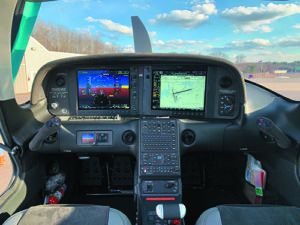
Avionics data storage is hardly a new capability for Cirrus. From the early-gen Avidyne-equipped models, Cirrus, maintenance shops and the FAA/NTSB have used the captured data that’s automatically burned to memory, and in the G1000 that’s on a bezel-loaded SD card. Having access to trend data is a huge resource, especially for curtailing the troubleshooting and debugging process. Autopilot doing something strange? Turbine inlet temperature not looking quite right? Look at the fault log for clues. In a mature Cirrus IQ program, certain critical items could generate an alert to someone at Cirrus who’s listening. Call it virtual tech support on steroids.
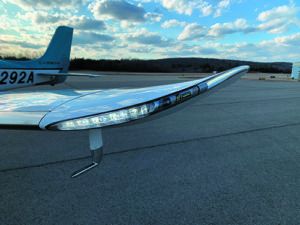
At the surface level, Cirrus IQ includes a clever smartphone app that enables pilots to wake up the airplane from anywhere there’s cell coverage by dialing in from the app. Once connected and the aircraft powered up, you can view what Cirrus calls the “health status” of the airplane.
The stats page in the app shows how many gallons of fuel are onboard, how much TKS de-icing fluid is in the tank, the battery’s voltage, the status of the oxygen supply, the oil temperature and aircraft flight time.
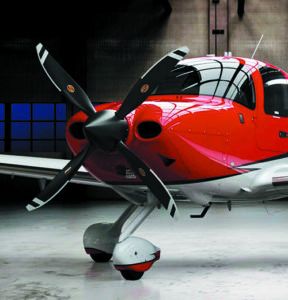
On the marketing side, Cirrus calls the owner/airplane virtual interaction another convenience in the so-called “Cirrus life,” where an owner can keep tabs on whether the aircraft was fueled during its FBO stay and if it was put in the hangar (evident by the temperature of the oil), before they even arrive at the airplane.
THE FUTURE
The real story with Cirrus IQ, especially if dialing in to the airplane isn’t high on your list of important tasks (you probably like to watch the line person refueling your airplane), is where the technology can go in the future, rather than what it does now. The G1000 Perspective+ avionics already collect an impressive amount of data, and Cirrus hopes it will streamline the maintenance chores of ownership.
When the plane hits the shop floor, the trend data is retrieved, but Cirrus said by automatically uploading this data to a digital cloud every time the aircraft lands, it might help predict pending component failure. Maybe the data shows a pending alternator failure. AOG time might be reduced to nothing if Cirrus can send a replacement alternator to a service center ahead of time. I think the concept is grand and can help sell airplanes.
But it’s not just about engine and accessory analysis. The stored mega flight data automatically streams back to the Garmin Pilot app during wireless data transfers via the Flight Stream 510 wireless hub. With it the entire flight can be re-created. Data is recorded in Cirrus Reports, a third-party web-based flight log and engine data analyzer powered by Aerocor.
Of course to effectively monitor the fleet of IQ-equipped airplanes (Cirrus said the system is not retrofittable at this time), I’d think the company needs a full-time technical staff dedicated to making practical use of the data. It’s unclear when that will happen, or how much is happening now. At press time only a handful of 2020 models have been delivered, and the COVID-19 crisis has temporarily closed the Duluth, Minnesota, factory and the Vision Center in Tennessee. Also unclear—although clearly controversial—is precisely what Cirrus will do with the flight data that tags along with the data stream.
I looked at an XLS spreadsheet of data that was downloaded from the demo airplane and saw an impressive level of data collection (refreshed every few seconds). Aside from engine and outside air temperatures there’s pitch, roll, speed, altitude and how the aircraft tracked vertical and lateral guidance on an approach, to name a few. With this data, if you’re consistently landing the airplane faster than Cirrus’ iSOP prescribes (or not properly managing the energy on an instrument approach as another example), it’s conceivable that the Cirrus training department will find out about it.
Cirrus even hinted that it can use the data to suggest remedial instruction. No matter how you feel about the idea of Big Brother watching, I think the aircraft owner should have the option to opt out of having the data automatically stored to anywhere other than a personal cloud storage. See the sidebar on page 16 for a training and insurance view on the IQ concept.
AN IMPROVED G6

The 2020 SR22T is officially still a G6, and overall—especially from a performance standpoint—is mostly unchanged from when the G6 was introduced back in 2017. But there are more features, and Cirrus deserves kudos for always tweaking creature comforts and avionics capability.
The SR22T is powered by Continental’s 315-HP twin turbocharged TSIO-550-K engine. In Cirrus tradition, there’s no propeller control because of the fixed governor. For takeoff, feed it full throttle and lots of right rudder. Simple. With 50 percent flaps deployed, accelerate to 90 knots while slightly holding the nosewheel on and the airplane flies right off. Clean up the flaps and trim for the climb.
If you’ve flown a later-model Cirrus you’ll know how the roll and pitch trim compression springs feel when the aircraft is out of trim. Don’t trim it properly and you’ll lose the battle to moderate to heavy control forces.
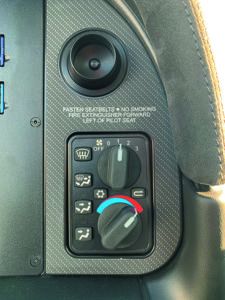
Real-world climb and cruise performance is respectable, if not fast. On a winter day the 10-hour-new airplane I flew for this report (loaded with just about every option available, plus four average-sized adults) hustled up to 9500 feet in 7 minutes at the 120-knot cruise climb speed. At 9500 feet it was making 180 knots true, lean of peak and burning 19.5 GPH.
But you don’t buy a turbocharged Cirrus to mess around down low. The sweet spot for the SR22T is up high. Expect 200 knots at FL180 and 215 knots at FL250. Oxygen and TKS icing protection are standard on the SR22T.
The airplane can carry a reasonable load. With four average-sized adults and roughly 50 gallons of fuel (capacity is 93 gallons) it was more than 150 pounds below the 3600-pound max gross weight—plenty of room for bags and/or more fuel.
Not surprisingly, there have been some additions to the Perspective+ avionics suite, notably the stabilized approach advisory feature. Wander more than three-quarter-scale deflection laterally or vertically on an activated approach procedure and the system will alert you to correct. It also monitors the flap position and warns you (audibly and visually) if they aren’t set correctly.
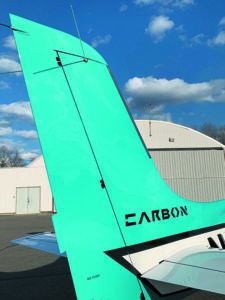
If you’re flying an older Perspective, you might appreciate some subtle conveniences in the latest Perspective+, including overlay of the heading bug on the moving map. It’s a good predictive graphic that could keep you from turning the wrong way in unfamiliar terrain or controlled airspace.
There’s also visual approach guidance, which builds an approach based on a 3-degree glidepath for most runways. It’s loaded like an instrument approach, and the autopilot will fly it while you compare it to what your eyeballs see outside the airplane.
WRAP IT UP
The SR22T GTS Carbon flown for this report was equipped with just about every option available except for the four-blade Hartzell composite propeller, which is $21,900. You can also highly customize the paint and interior of your new Cirrus, and those willing to pay the premium are rewarded with some of the finest paint work I’ve seen from an aircraft OEM. The Carbon appearance package on the demo airplane included premium leather seating and an exterior paint scheme that was inspired by high-end sports cars.
It also had the $59,900 TKS system, which is approved for flight into known icing, a $29,900 air conditioning system and a $15,900 Garmin satcomm system, which Cirrus calls Global Connect.
All in, the airplane was priced at $1,002,6000, which included a five-year spinner-to-tail warranty. Cirrus said that incentives are available for owners who want to lease the airplane back as a Cirrus demo airplane for a specified period of time. During that time the airplane will be professionally operated by Cirrus corporate pilots, meticulously detailed and maintained by a Cirrus approved service center.
Contact www.cirrusaircraft.com.
If you’re serious about buying a new Cirrus, but have agita over the idea of the airplane ratting you out, you’ll have to get over it. I was told that signing on the buyer’s line means agreeing that Cirrus has rights to the data recorded in the avionics. That SD card is a useful tool in the Cirrus corporate tool belt—it’s been using trend data to defend itself from lawsuits for years. Negligence could be pretty convincing when the data replay shows you attempted the approach to the mountain resort three times, descended below glideslope on each and fatally low on the last.
I asked Jon Doolittle, our resident insurance pro at Sutton James Aircraft Insurance in Connecticut, to weigh in on whether data-sharing capability can lower insurance rates, or at least make a high-risk pilot new to a million-dollar Cirrus more favorable. The reaction among the insurers he spoke to about the Cirrus IQ was deliberate, if not downright cautious, and at first all over the map as they thought about the idea.
“There is no room in the rates for this right now,” was one, referring to the insurance market’s attempts to increase rates toward profitability. One senior underwriter summed it up: “Is this data predictive? Will it help me tell the difference between a good risk and a bad one?” We think it might, especially if a Cirrus-approved instructor offers a favorable rating after analyzing the data. There’s also the opportunity to use the data as a plan for recurrent training. If the data reveals your habit of flying your Cirrus to the flare 15 knots fast, some focused, data-driven training might avoid an inevitable smoking hole at the end of the runway.
Another insurer pointed to the fact that auto insurers have been using a much simpler technology that only gives them a few data points, and yet they continue to use it, so it must be working for them. “Each conversation that I had eventually followed a similar path: doubt, followed by a growing interest as they began to see some of the possibilities,” Doolittle told us. Ultimately, most insurers he spoke with fell in line behind the idea. None said they would reduce rates as these new airplanes rolled off the line, but most of them felt that this was a way for general aviation to embrace similar technologies used by the airlines and corporates, and to move closer to their enviable safety records. It’s tough to argue with Doolittle’s takeaway.
“There may not be large premium discounts given for this new equipment in the near term, but it might make insurers more willing to take on a million-dollar single-engine airplane knowing that Big Brother is keeping an eye on things.” —Larry Anglisano

